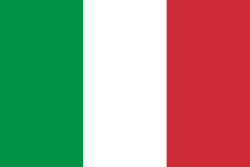Cape Verde, often celebrated for its pristine beaches and crystal-clear waters, has another treasure hidden within its landscapes - a rich history and cultural heritage showcased through remarkable monuments.
Under Cape Verdean law, these architectural wonders, important compositions, and modest creations are classified as monuments. They hold historical, archaeological, artistic, scientific, technical, or social significance, reflecting the nation's diverse heritage. In this blog post, we embark on a journey through time to explore some of the most significant monuments in Cape Verde.
Monument Classification
The Cape Verdean law classifies monuments based on their owner. If the property belongs to the state, the government uses a decree to classify it. When the property is owned by a local municipality or a public entity, classification is achieved through a government order, with the owner's consent. If an agreement cannot be reached, the government issues a decree for classification.
Crucially, once a monument is classified as a national heritage, it cannot be modified or restored without permission and supervision from the Cultural Heritage Services, particularly the Institute of Cultural Heritage.
As of now, the monuments within the Historic Site of Cidade Velha, a UNESCO World Heritage Site, and the Tarrafal Concentration Camp are classified as National Heritage.
Ruins of the Cathedral of Ribeira Grande de Santiago
The Ruins of the Cathedral of Ribeira Grande de Santiago are an eloquent testament to Cape Verde's rich history. They were the largest religious structure ever built in Cape Verde and along the entire African coast.
Construction began around 1556, and by 1700, the cathedral was almost complete. However, its current state, reduced to ruins, is a result of a devastating attack by the French corsair Jacques Cassard in 1712.
Fortaleza Real de São Felipe
The Fortaleza Real de São Felipe, erected in 1587, stands as a formidable architectural marvel. It sits dominantly about 120 meters above sea level, overseeing the breathtaking coastline.
It was the first and most important fortification in the archipelago, serving as the linchpin of the city's defense system. The fortaleza boasts an impressive polygonal layout with bastioned design, strategically positioned to command two facades facing the field and two fortified fronts with shooting parapets facing the city center.
Pelourinho
The Pelourinho, a symbol of municipal power and royal justice, was constructed at the turn of the 16th century, either in 1512 or 1520. Located in the heart of the city, it served as a public platform for reading municipal acts, a venue for reprimanding infractions, and a bustling hub for various trades, including the exchange of slaves and local produce.
Church of Nossa Senhora do Rosário
The Church of Nossa Senhora do Rosário is a testament to Cape Verde's enduring faith and architectural heritage. It was built in the late 15th century, around 1495, initially as a Manueline-style chapel.
Over time, it was expanded to become the Church of Nossa Senhora do Rosário. This remarkable edifice is one of the oldest surviving religious structures and a rare example of Gothic architecture in sub-Saharan Africa.
It was associated with one of the most significant ecclesiastical brotherhoods in Ribeira Grande de Santiago, the Confraria de Nossa Senhora do Rosário.
Convent/Church of São Francisco
The Convent/Church of São Francisco is a testament to Cape Verde's heritage and history. Built around 1640, this magnificent structure stands on land donated by Joana Coelho, a wealthy rural landowner and the widow of Captain Fabião de Andrade.
The convent was designed to accommodate the Franciscan friars, who took over from the Jesuits in Cape Verde. It also served as a center for education, where the priests taught various trades to the community. Tragically, the convent was almost entirely destroyed after an attack by the corsair Jacques Cassard in 1712, and further damaged by a storm in 1754.
Tarrafal Concentration Camp
The Tarrafal Concentration Camp is a somber reminder of a dark chapter in Cape Verde's history. Located in Chão Bom, it was constructed in 1936 based on a decree dated April 23, 1936. The camp received its first inmates on October 29 of the same year and operated until 1956. In 1962, it was reopened as the "Chão Bom Labor Camp," designed to imprison anti-colonialists from Angola, Guinea-Bissau, and Cape Verde. The conditions within the camp were harsh and inhumane, marked by abuse, isolation, and humiliation.
This blog post provides an overview of Cape Verde's historical monuments, each narrating a unique chapter in the nation's history. As you explore this remarkable archipelago, remember to visit these sites to connect with the rich cultural tapestry of Cape Verde. The stories they tell are both captivating and enlightening, offering a deeper understanding of this fascinating destination.
Note: The classification and preservation of these monuments are essential to safeguard Cape Verde's cultural heritage, and these structures hold an enduring place in the nation's history. They continue to be an integral part of the cultural tapestry, offering visitors a unique glimpse into Cape Verde's past.
Contact us to organise your adventure trip to Cape Verde

